My home office loud speaker journey: a buyer’s guide
Introduction
I’m lucky in that I get to work from home, and I listen to music while I work. All day, every day. And when I was updating my office to have a fancy solid bamboo sit-stand desk, it was time to streamline my desk setup which included turfing some big old bulky and muddy PC speakers with something more fitting for my meticulous ears.
And it turns out, buying desktop speakers is actually harder than it sounds. Well, to find the right ones at least.
And while I do have headphones, I don’t want to be wearing them all the time especially when I don’t need to drown out noisy open office spaces. I still love my AirPods Max and AirPods Pro – both for different reasons – and sometimes it is great to absolutely zone out, but day to day, having open ears is good for the home office.
In the lead up to buying speakers, I was researching, reading reviews, and found that desktop speakers fell in to a few categories:
old school cheap PC speakers (or old no-longer-available products)
RGB-lit bass-heavy gamer-focused setups
studio (monitor) speakers
bookshelf speakers
And then there’s the whole living-in-Australia thing that changed what was actually available to demo too: so many more options exist overseas.
While I’m definitely not a high-end audiophile, I do appreciate the finer nuances within music – those intricate details, moving textures, and of course the full range frequency of sound. And expect my speakers to gorgeously perform.
Which means that category 1 and 2 were easy to discount. Not sure cheap PC speakers are going to give detail, texture or full range, and RGB lights didn’t really fit in to my office aesthetic. Righto, so, moving on…
That led to learning more about studio speakers and bookshelf speakers.
While studio speakers came in a range of sizes (and budgets) often reviews would comment on their flat sound – which is by design. They’re designed to have that neutral sound to help producers mix and balance with accuracy (and without the advertising flair of overpowering bass that some speaker manufacturers use to sell their products). I do love a rich low end, but not that overwhelming bass-heavy tuning some speakers (and headphones) advertise as “good” sound.
In the end, I couldn’t find a well-reviewed yet small pair of studio monitors that would do the job – they’d then start to go up in size and budget. And for speakers on an office desktop, where space is a bit of a premium, you don’t want to have huge black boxes taking up the space.
Which lead to reading more about bookshelf speakers. Some of these would come with modern USB inputs, others with Hi-Res audio support, but were designed for the enjoyment of music listening.
Now we’re getting somewhere.
But wait, there’s still huge gaps here: you can get cheap speakers that get positive reviews, but are they paid? Are they real? Is it someone comparing the speakers to a tinny cheap PC speaker (so of course anything would be better)? The cynic in me is weary of glowing positive reviews – especially when I feel I know I’m quite particular with how things sound (and look, in the case of things like TV picture quality): I do love excellence.
Research, reading, specs, stats, Excel spreadsheet to compare models. This one goes down to 55kHz, but this one to 54kHz, so it must be better. Yeah, I’m that sort of guy. But it means I make the sales person’s job easy: I rock up with a fair idea of what’s out there and what I want our of a purchase. Anyway… enough about that.
I was happy to spend some money… I wasn’t expecting that excellence out of $50… but also didn’t want to go overboard. So started with a budget of around $400. Surely that can buy a lot of speakers, right?
It was time to make a purchase. I was so excited by this first decision – after weeks of spreadsheeting. They weren’t the cheapest on the list, but had superb reviews, Hi-Res support and USB input. And they looked rather unique too. My first purchase: the Edifier S880db.
Edifier S880db
The Edifier S880db were a neat addition to the desk: they weren’t too big, weren’t too small, and sounded incredibly crisp and clean. Plugged in via USB to my MacBook, sat nicely on some angled speaker stands, I thought it was a nice upgrade.
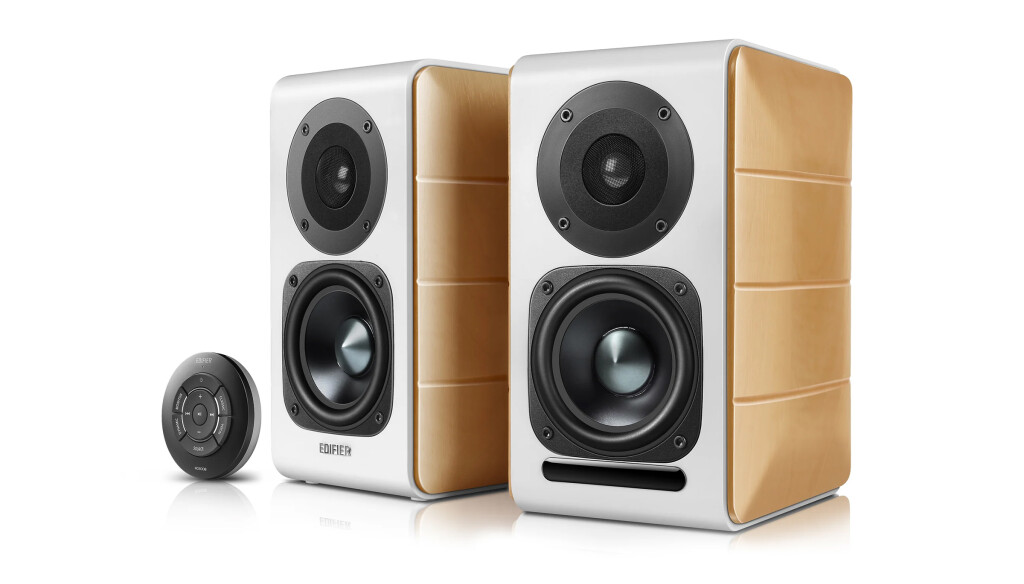
Until I started to hear a little rattle.
Curious, I thought, so played detective trying to find it. Was it something on the desk? What happens if I put the speaker on a towel to absorb any vibrations? No… it’s not that. But on certain frequencies, there was most definitely a rattle in the left-hand speaker.
I adjusted the separate bass and treble knobs, and even with the bass knob at its default position, the rattle was present. And at all volume levels: from low to high.
It’s like a wire inside was vibrating against the housing. Or maybe there was even a micro tear somewhere on the actual speaker cone. Regardless, for one of Edifier’s higher-end speakers, this shouldn’t happen.
No worries, I thought, under warranty, I’ll talk to the manufacturer, Edifier. Now Edifier make a range of bookshelf speakers – starting at a little over AUD$100 a pair. The S880db were more than that, so I thought I was splurging on something on the higher end. The range of speakers they produce all receive positive reviews. I must have a lemon.
I speak to Edifier about it, and their advice was: turn the bass down, and turn the volume down.
Hang on, wait a moment. I’ve got bass at its default setting, and volume at a very low level, and you’re telling me to turn it all down? That can’t be right. But yes, on clarifying, that was their solution to the problem.
Their response did not sit well with me at all: brand new and premium (in their range) speakers should not rattle.
Thankfully I was still within Amazon’s return window, and I was able to effortlessly return these and get my money back. But back to square one.
And without speakers. Great.
Apple HomePod Mini pair
I had recently purchased a few HomePod Minis to scatter around the house, so I pinched a two of those and set up a pair for my MacBook.
For their size, these speakers pump out an impressive sound. They’re tiny, and I love their colours, but the issue is that they’re wireless and not really designed for desktop speaker use.
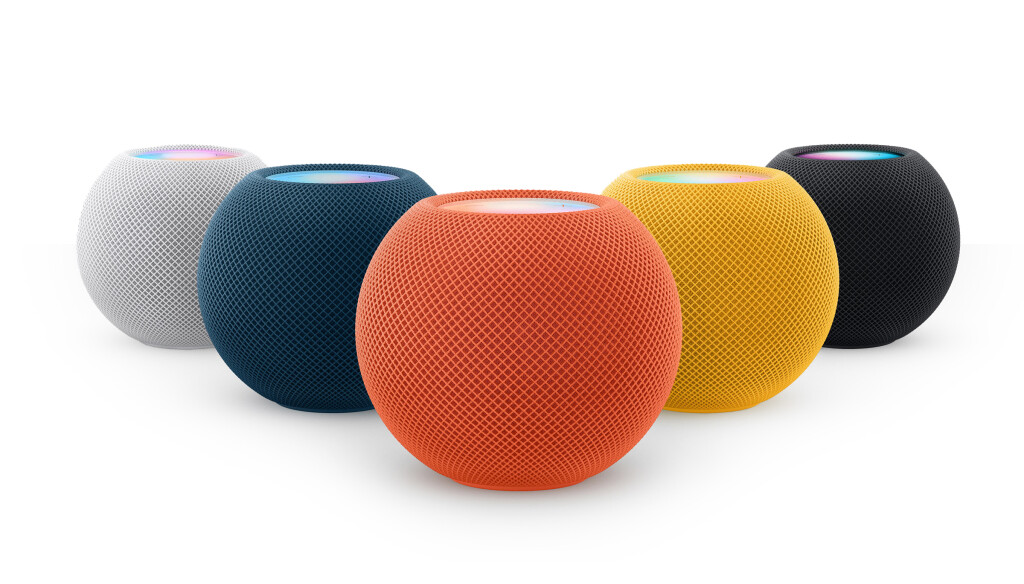
I had a number of issues when using these with my MacBook: do I just sent Apple Music to them? Or do I configure the Mac to use these as the actual speakers for all audio? No matter the configuration, there were problems with delay and regular dropouts. One would stop playing. Or they’d both just stop. Maybe it was a wifi issue, but looking online I’m not the only one.
On a side note, my other half has been battling this for ages and only finally gave way to buying different desktop speakers – but we’ll get to that combo later.
In the HomePod’s defence, using them in a different way – playing music from my iPhone directly, not via a Mac – has delivered a great experience throughout the house. But as a pair for a MacBook, it has not been a smooth or satisfying experience.
There’s a simple solution that would make them ideal: allow a wired input: be it USB, heck even an aux input – just an actual cable and not rely on wireless. But we know the world is going wireless so that’s unlikely to ever happen.
Really back to square one now. So I still wanted some music, so used my MacBook speakers. And yeah they’re decent (for laptop speakers), but found them to be incredibly fatiguing for long listening periods.
On the plus side, at least the HomePod Minis are scattered back in their originally intended rooms so they’re not a waste.
But, I needed to keep looking. And this involved reconsidering the budget. The research phase started again, and considered increasing the budget, maybe up to $1,000. Let’s see what that can do.
Q Acoustics M20
The Q Acoustics M20 receive stellar reviews, and have a remarkable styling, like all of Q Acoustics’ products. And the in-store demo showed they even sound impressive to boot.
I was hesitant for these: they were taller and deeper than I was wanting on my desk (28cm high and 29.6cm deep), but they ticked all of the other requirement boxes I had: USB input, Hi-Res support, all-in-one active speakers. And priced at AUD$899, they fell under my $1,000 budget.

But after a few weeks, they left me a little underwhelmed with their low end response. For such a big speaker on the desk, I felt like there needed to be more.
No worry, these speakers also have a subwoofer output: so let’s get a subwoofer too. Surely I can treat myself, right? If I’ve gone this far budget-wise, what’s a little more?
Yes, I know, I enable myself.
Add the Q Acoustics 3060s subwoofer
The Q Acoustics 3060s is a slim subwoofer – not the usual square cube, but long and narrow. Great, that’ll be awesome down along the wall – not intrusive, and should pair nicely with the Q Acoustics M20.
The size and specs were superb, and before purchasing, had a chat with both the store’s sales team, plus the Q Acoustics people, about its compatibility, auto on/off feature, and suitability for lower level volumes – you know, for desktop listening, not home theatre use.
I was assured, from both parties, that it’d be a great match.
And it was… except for the lower volume point.
The 3060s features an auto on function when it detects a signal, and it works as it should, but only with a higher-than-low volume level. In other words, the sub would not wake up when it should, and would go to sleep when it shouldn’t.
This started months of emails with both Q Acoustics and the retailer. One of Q Acoustics’ requests was to replacement M20 unit with a newer model: and the only way to tell is by its serial number. It still is sold as the same product, but with a different chipset and new firmware version that was meant to address the subwoofer issue. The top button finish is slightly different, and their behaviour is slightly different too: this new model made USB connectivity audio a little flaky, and the subwoofer issue remained –this included trying a straight subwoofer cable, but also using a Y splitter on the subwoofer side: the auto on/off was still inaccurate.
A workaround was to have an Apple shortcut created that played a loud low frequency sound – the M20 simply passed it out to the subwoofer, and it would wake up.
The other workaround was to turn the volume up and then down again.
But really, both of those should not be needed on a hi-fi system, and one from such a reputable brand. And still the sub would go to sleep mid-track sometimes too.
For those playing along, the issue is the M20’s subwoofer output volume is too low, and the 3060s’s inputs are not sensitive enough – it could be one, or the other, or both. The M20 firmware update was meant to address the subwoofer output volume. But alas, not enough.
From a consumer side, this also shows a frustrating issue: the M20 cannot be updated by a user – it needs to be sent to a service centre to receive an update. And these are heavy speakers, so quite an inconvenience to ship. For an active speaker that has smarts like the M20, it really should be user-updatable for tweaks like this.
However, even with these workarounds, another issue raised its head: the on-going volume, at a reasonable level, was not enough to keep the 3060s awake. Even playing a bass-heavy track, where you can hear the 3060s rumbling away, it would turn off mid-track. You could hear it was playing, there was input signal, and still, to sleep it went.
In the end, both the M20 and 3060s were sent to the retailer’s service centre. Yes, brand new products in the service centre, and their response: we can’t replicate the issue, when for me it would happen without fail multiple times a day.
Emails went back and forth, and I was made to feel like it was my fault or I was doing something wrong. I then asked them to turn the volume down one “click” on the remote. And that was it: they could replicate the issue too.
At this point, Q Acoustics went silent on me, and I was liaising only with the retailer’s support centre. And their claim was that this was normal behaviour and everything was working as expected: there was no fault.
My point though is that the volume level to kick the subwoofer in is remarkably high. Unbearably high for desktop listening – meaning this is actually not fit for purpose. And I had an email trail from the retailer and supplier claiming otherwise. But thankfully, after research of ACL and many emails, the store eventually offered a full refund, and back to square one again.
Ultimately, I don’t think this pairing is designed for desktop use: the volume levels need to be too high to keep everything awake. In a larger space with a more pronounced volume, they may sing differently. But that’s not what was needed for an office setup.
KEF LSX II
More research now, looking at higher end setups, and even considering going down the passive speaker route. Melbourne HiFi had a number of interesting options, so thought it would be best to go in-store and have a demo, talk with an expert, and figure out what would be best: including AudioEngine and KEF active options
They gave me superb demos of the Melbourne-designed Encel Gelati speakers (great colours and look), as well as the KEF Q150… but these all would require a DAC and amp. And were on the large side – tall and deep. More components needed, bigger size. Not great for a desk setup.
The last one was a “OK, I’m here, let me hear them” was for the KEF LSX II. At the time these were brand spanking new – at the start of my journey, the LSX was available but way out of my initial budget. And in hindsight, I’m glad I waited for the II version. And yes, those too were way out of budget, but… let’s take a listen anyway.
And these speakers are insanely compact, yet pack an insanely powerful punch. I loved their clarity in-store, but struggled with the price tag.
On leaving the store, my partner and I talked: especially about my journey so far, my expectations for speakers, and that for someone who loves their quality audio, a “treat yo’ self” moment is allowed every now and then. That and they had 15% off store wide.

How powerful you say? Commandingly loud and distortion free: so much so, I’ve now limited their volume to 50%, and that still is a monstrous roar for such tiny speakers: I’d hate to blow them (and don’t need them anywhere near that level).
And they look gorgeous – I could get them in blue! Mine have a blue fabric outer, solid plastic front, and a blue and gold trimmed central component with their unique KEF appearance. Photos do not do these speakers justice: the finish and workmanship is stellar.
There was a wait of a few months, but was such an exciting day with that ultra-adult-level KEF box arrived. With the KEF P1 Desk Pads (fancy name for “angled stands”), of course an eye-watering extra purchase, they are sublime to listen to. Subtly toed-in, angled up at me as the listener, they offered such an incredible listening experience.
After my experiences so far, I was curious as to what a sub would add to the mix. So grabbed the home theatre sub, and discovered an incredibly immense foundation of richness that builds out the lower end. Without a sub, these speakers grab your attention and demand to be listened to. But with a sub, your entire soundstage demands respect and refuses to let go. Jaw-dropping.
Great, so now I needed to find a pairing sub.
Add the SVS 3000 Micro subwoofer
Back to Melbourne HiFi I go, and the team there are superb to work with: I explain to them about my Q Acoustics issues with sub volumes, and because I’m well-researched, had a few units I wanted to hear, and also wanted to hear their recommendations.
They invited me to a room, and suggested in three contenders: the REL T-Zero mk III, the SVS 3000 Micro and the KEF KC62.
Now this is a great time to raise the KEF app. The KEF speakers can be controlled by their remote, but with more customisation available via the KEF app (and yes, runs on your M-chip MacBook too). This includes an incredible suite of subwoofer output options to help tune the frequency responsibilities of the speakers and the sub, as well as gain (to help in case the sub decides to fall asleep): all amazing features that would have been great with the Q Acoustics system.
Melbourne HiFi set me up in order of budget: REL first. And it sounded good… the soundscape had a bottom end which was decent, but then when they plugged in the SVS 3000 Micro, the difference was so pronounced. Bottom end with clarity, depth and richness, and without unnecessary boom, and absolutely free from distortion – even as those low frequencies hit.
Right, the REL is off the table. Easy.
The final comparison was between the SVS 3000 Micro and KEF’s KC62. This thing is absolutely tiny, and insanely hefty with its weight. No, really: it’s unexpectedly heavy. And that price tag. The price tag is more than the KEF LSX II speakers themselves. Yes, hefty in more than just weight.
Both of these subs feature dual woofers, set up in an opposing structure to help minimise vibrations. Both are incredibly compact, and offered a hair-splitting difference in performance. As I said, I’m no top-tier audiophile – I do love my sound, thrive on excellence – and while the KEF KC62 to me had a slight edge in sound, was it worth an extra $1,000 over the SVS?
The SVS also had an app to help tune it, and continued to receive impressive reviews. SVS are a sub company – they know their market – and these demos have proven that a subwoofer doesn’t need to be massive to get impact. But yes, that comes at a cost, but it can be done.
Black Friday was around the corner, and I was watching prices. If the KEF dropped below $2,000, I would have gone for it: but that was a massive discount to expect and, yep, it didn’t happen. With a retailer hinting at a major price rise incoming for SVS, some had specials on their existing stock of the SVS 3000 Micro, including one offer that was simply too good to refuse. So grabbed a bargain with a $1,300 SVS 3000 Micro sub.
Another heft box arrived, and the sub was set up. With two apps – one for the KEF and one for SVS – I had a wealth of possibilities to help tune for the setup and room. And yes, it took a little bit of time to blend it smoothy, and find the right placement. But with both speakers and sub having apps, I could stay in my listening position and tweak to my heart’s content.
Originally, the sub was under my desk… but never sounded quite right: at times it was just right, but others felt too much, and others too little. But with a slightly longer cable, it’s now behind the chair in the corner of my office. There’s no prominent ‘boom’ throughout the room, it has blended and balanced perfectly, you can’t even see the sub unless you’re looking for it, and my entire soundstage is impressively broad, rich, detailed and crystal clear.
Even at the lowest of very low listening levels, I’ve never once had the SVS 3000 Micro go to sleep during use. It wakes up reliably every time I start listening, stays awake at all volumes, and delivers a tight and responsive low end.
While I don’t doubt the KEF KC62 would have been a great buy too, this is one time where logic took over: the SVS 3000 Micro is aggressively priced for being such a high performer. And I bet that if someone gave me a blind and tuned demo of the KEF LSX II paired with the KEF and SVS sub, I would struggle to tell them apart. Step away and not be able to listen to them side-by-side, I feel I’d be even less likely to tell them apart. Bang (boom?) for buck, the SVS 3000 Micro has delivered insane value.
AudioEngine A2+
So this is a bonus addition because, let’s face it, the KEF and SVS setup is not cheap. My other half had been using an Apple HomePod Mini pair, and was frustrated with the on-going issues, dropouts and delays. Time for something else.
During my research stage, I had AudioEngine on my short list, and had a bit of a chat with AudioEngine’s US-based team – and they were superb to talk to. Responsive and friendly support goes a long way for me. Reviews claim a high quality product, nice touches on delivery (such as the fabric speaker bags), but also that they do need a subwoofer to come alive.
With the KEF-level speaker way out of budget, and my partner didn’t want anything too big as they have a smaller desk than mine, it narrowed the scope to look at the AudioEngine A2+: their other speakers all started to get a bit too big.
While these were on my shortlist, their reviewed high recommendation for a subwoofer ruled it out for me (because I would have liked no sub, but I know, I know, I got one anyway), but thought maybe my partner would appreciate the clear 2.0 sound. After all, it would be nice to have a pure 2.0 setup with a well-rounded sound.
But you can’t cheat physics: and small speakers just don’t have the woofer capabilities to produce those low frequencies. And that’s not AudioEngine’s (or any other manufacturer’s) fault – it is the way it is.
But the A2+ look superb: a gloss white finish with black components, with AudioEngine-made black silicone stands to angle them up to the listener. On my partner’s desk, they look incredible: they’re compact, smart and not obtrusive – a great addition for a modern desk.
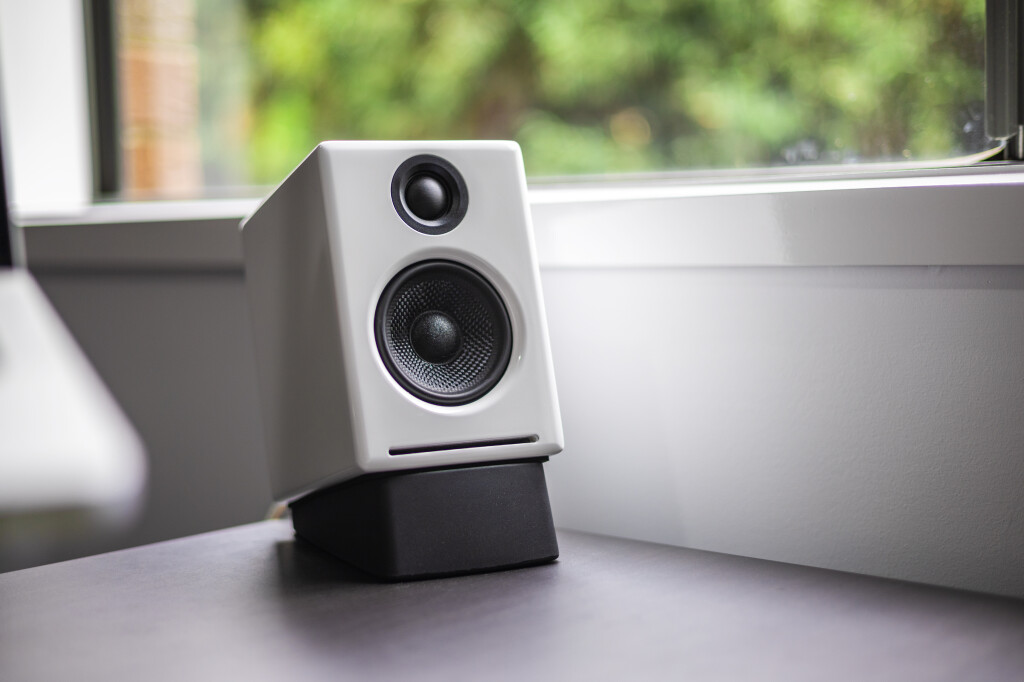
The sound they produce is clear, and captures those nuances in various genres of music, with one thing lacking: the richness in the low end. We grabbed the home theatre sub, and plugged it in the A2+, and the difference was night and day: that entire low end just adds a foundation to the mids and highs: they were totally different speakers. This meant, a sub was warranted.
Add the AudioEngine S6 subwoofer
If you’ve not seen the AudioEngine S6, this thing is tiny (for a subwoofer – basically a 33cm cube). Commenters online claim it is too small to be a woofer, to get something bigger, etc – but remember, there’s a place for everything. And some commenters seemed to judge it based on that, but not actually have heard it. If you have the space for a big system, get a big system. But for a desktop environment, the S6 is superbly sized. And for low volumes, adds that low end without requiring massive expense or size.
As always, placement of the sub is important – the original placement was a tad boomy on certain frequencies, and after doing the sub crawl, found the ideal place away from their desk. Its miniature stature means it blends in nicely to the room, and with some crossover blending, seamlessly fits in to the soundscape providing a richness without the doof.
The only criticism is that sometimes the sub needs a little kick to wake up. Only sometimes and typically that’s at very low level listening – low level listening is responsive, but very low is when it sometimes needs a low end kick to wake up. But when it wakes, it stays awake until the entire system goes to sleep.
While the overall setup is more than my partner was wanting to spend, now that it is all set up and being used for a variety of genres, a very happy combination.
A note on Active vs Passive speakers
Audiophiles often say to ditch the active speakers, and that a quality pair of passive speakers will last. And I don’t doubt it… but also for a home office setup, I don’t want the hassle to fiddle with a DAC, amp and speakers. I appreciate there’s a time a place for a setup like that, and there are some great looking (and sounding) passive speakers that Melbourne HiFi demoed for me, but it was all the extra pieces that just didn’t feel right on the desk setup, and for speakers that still fell in to my “too big” category.
Speaker summary
Speakers are not all created equal – nor is customer support – but now with the KEF LSX II paired with the SVS 3000 Micro, I’m absolutely thrilled. Listening to music, all day, is not fatiguing, delivers a richness and nuance, helping uncover aural gems in tracks that I’ve heard dozens of times before: it’s like discovering new music from old favourites.
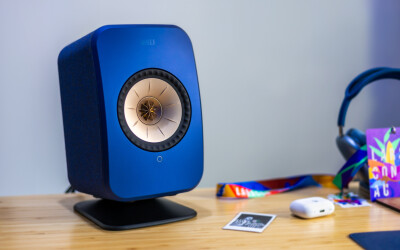 KEF LSX II
with SVS 3000 Micro subwoofer
KEF LSX II
with SVS 3000 Micro subwoofer
|
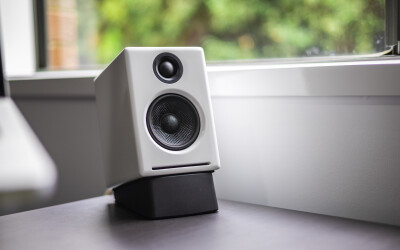 AudioEngine A2+
with AudioEngine S6 subwoofer
AudioEngine A2+
with AudioEngine S6 subwoofer
|
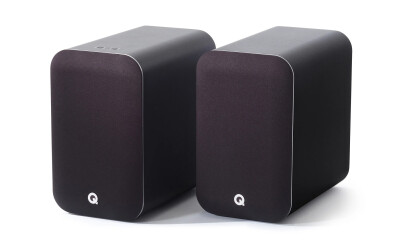 Q Acoustics M20
with Q Acoustics 3060s subwoofer
Q Acoustics M20
with Q Acoustics 3060s subwoofer
|
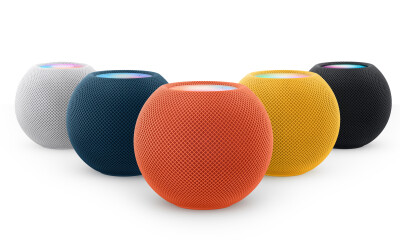 Apple HomePod Mini Pair
Apple HomePod Mini Pair
|
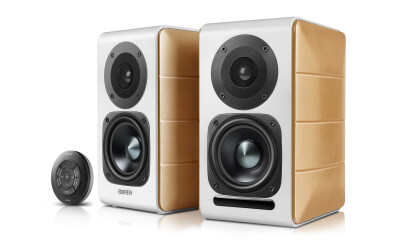 Edifier S880db
Edifier S880db
|
|
|---|---|---|---|---|---|
| What I like | |||||
| What I like |
|
|
|
|
|
| What I dislike | |||||
| What I dislike |
|
|
|
|
|
|
Price (AUD) Prices accurate at time of purchase |
|||||
| Price (AUD) Prices accurate at time of purchase |
|
|
|
|
|
| Status | |||||
| Status | Marty's office, used daily | Michael's office, used daily | Returned | Used in other rooms | Returned |
| Recommended? | |||||
| Recommended? | Definitely, if budget allows | Yes, if budget is a consideration | For louder listening | Not as a Macbook speaker | No |
What I learnt through this process
Well, what a saga. And here I thought it’d be a short post, several thousands of words later. But what have I learnt. Oh boy, so much.
Firstly, don’t believe specs alone or rely on internet commenters to determine speaker quality. Some have opinions without having actually experienced a product in question, some are just audio snobs, and some have absolutely no idea on quality audio. Go out there and listen yourself.
Secondly, a compact desktop-sized 2.0 setup is a challenge to find that has a full soundstage. Physics are a major factor.
Thirdly, following on, this means you’ll probably need a subwoofer. But don’t be scared – subwoofers don’t mean doof, they mean richness. Placement within your room is key.
And finally, don’t be afraid to adjust your budget. Yes, my KEF setup is expensive (and some may still struggle to justify it)… but it is also compact, and gorgeous to listen to. These are listened to every day, and bring me great joy, and I’d guess that at the time of writing, they’re up to at least 2,500 hours. That’s 150,000 minutes of pleasure. And with no regrets on their initial financial outlay. I’ve received immense value out of this impressive and high-end setup.